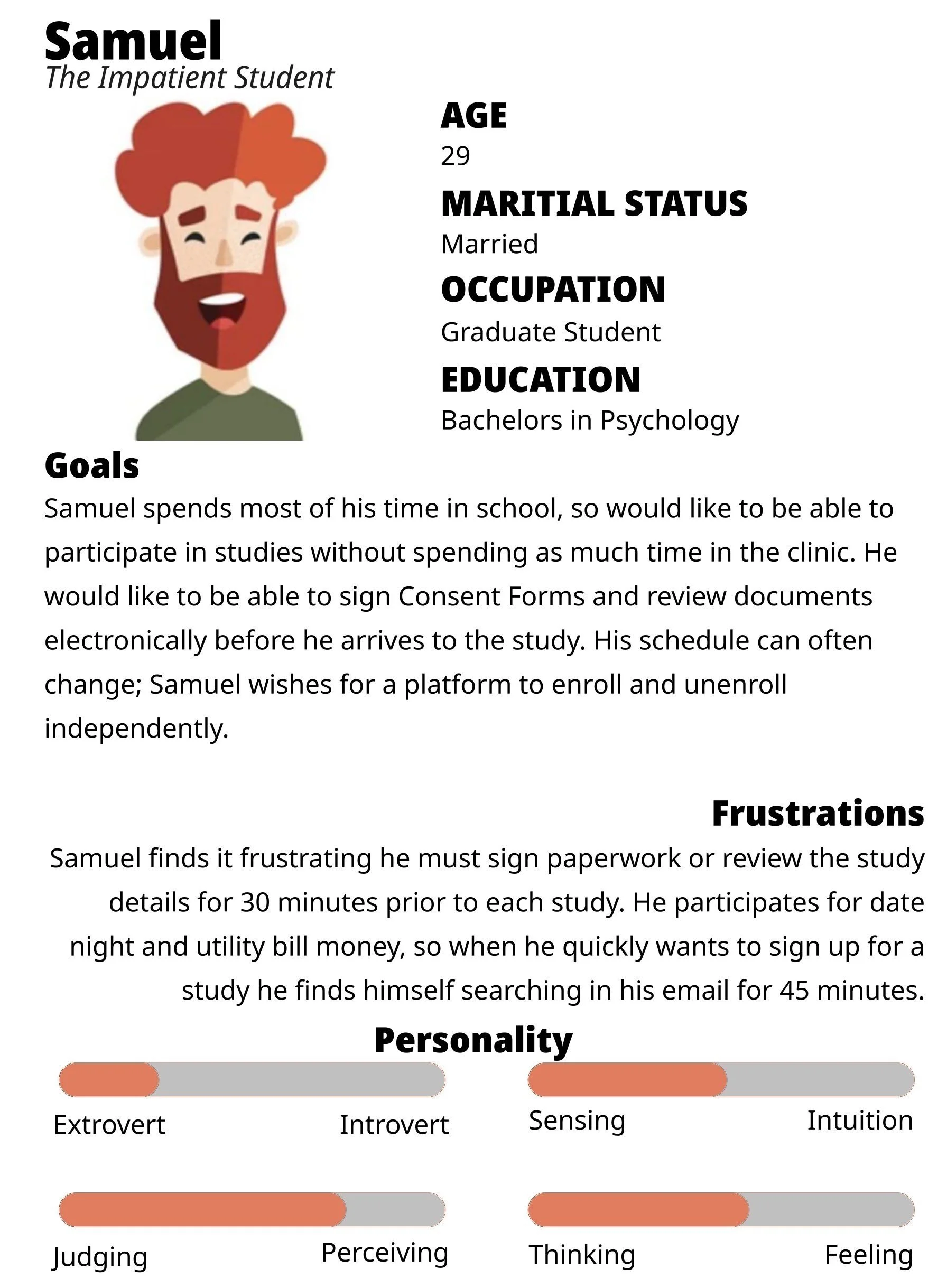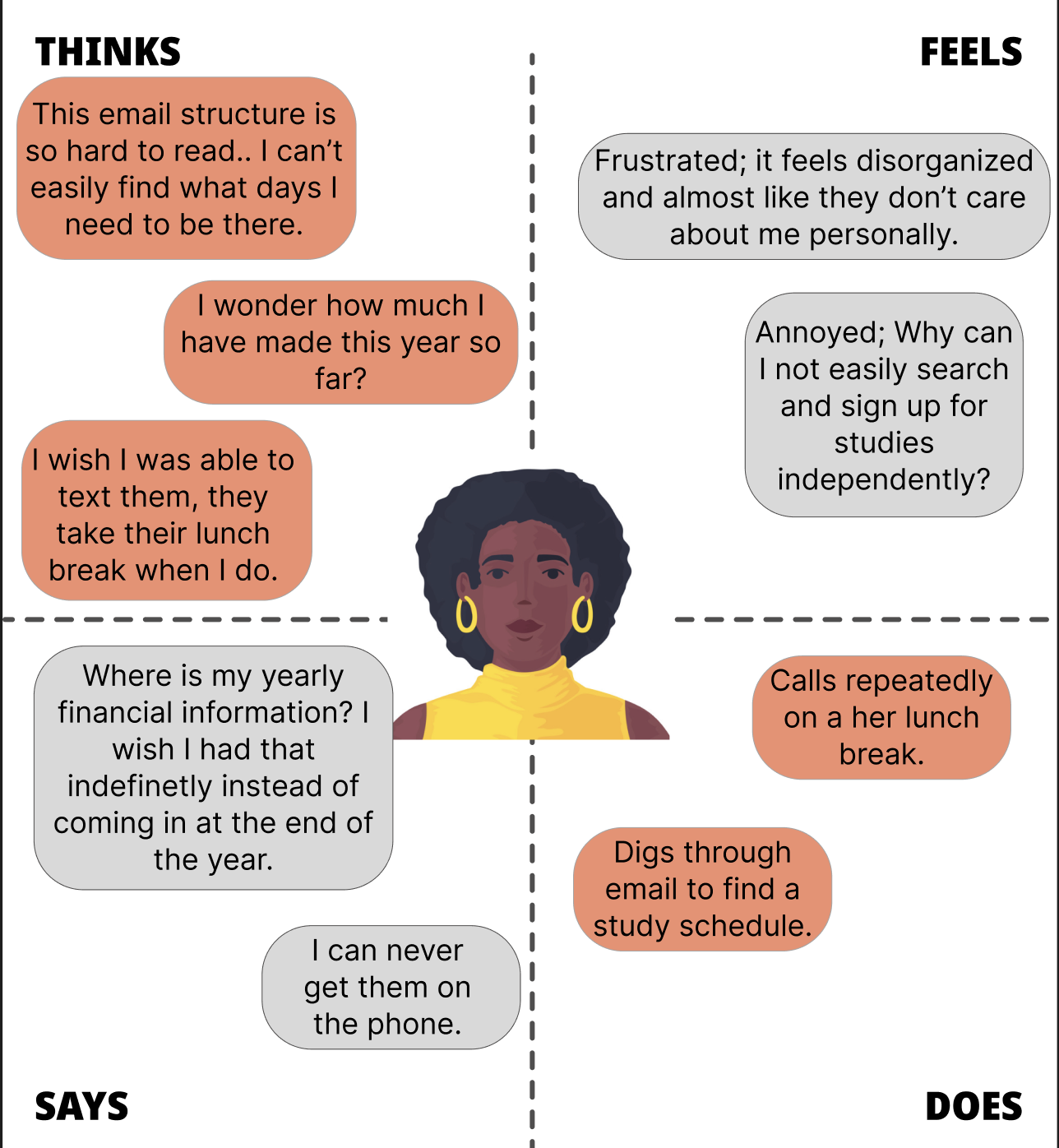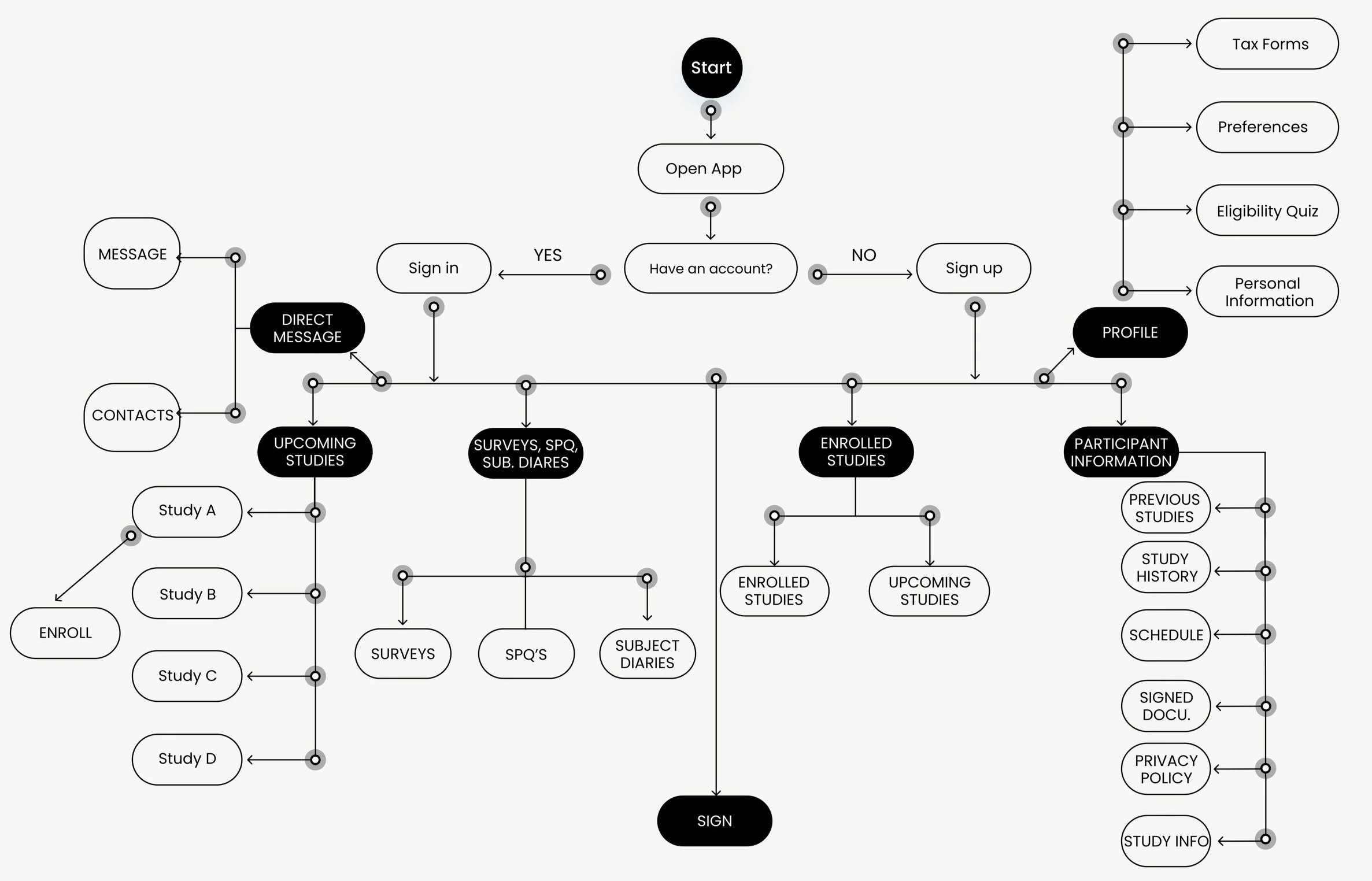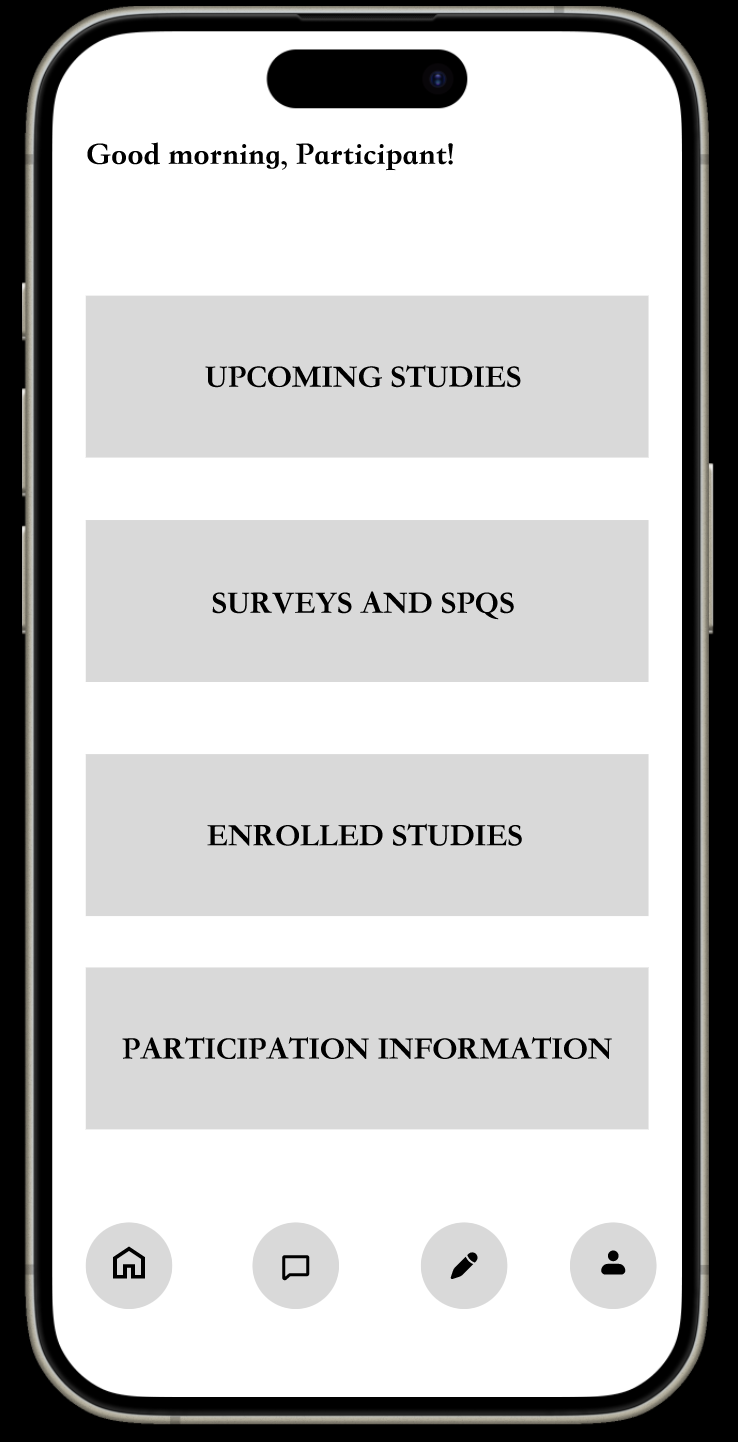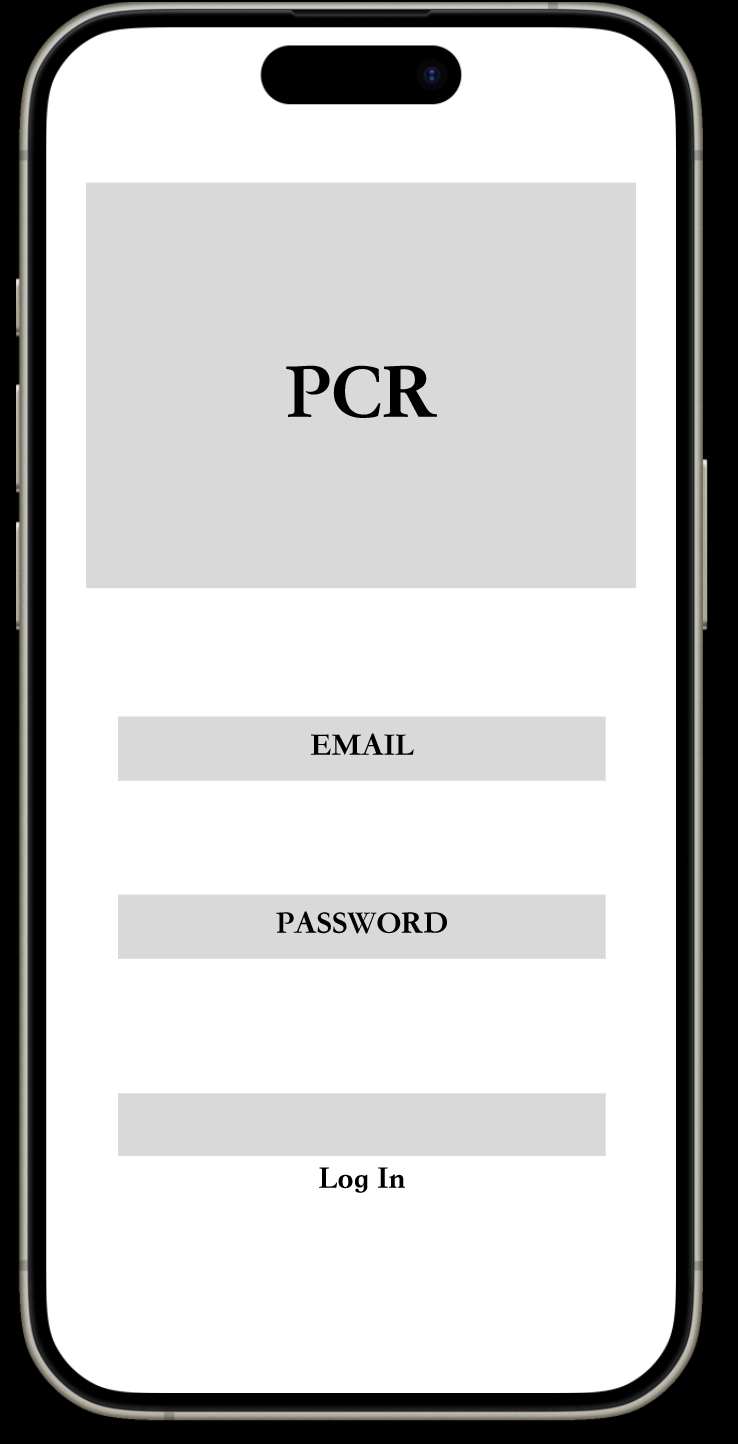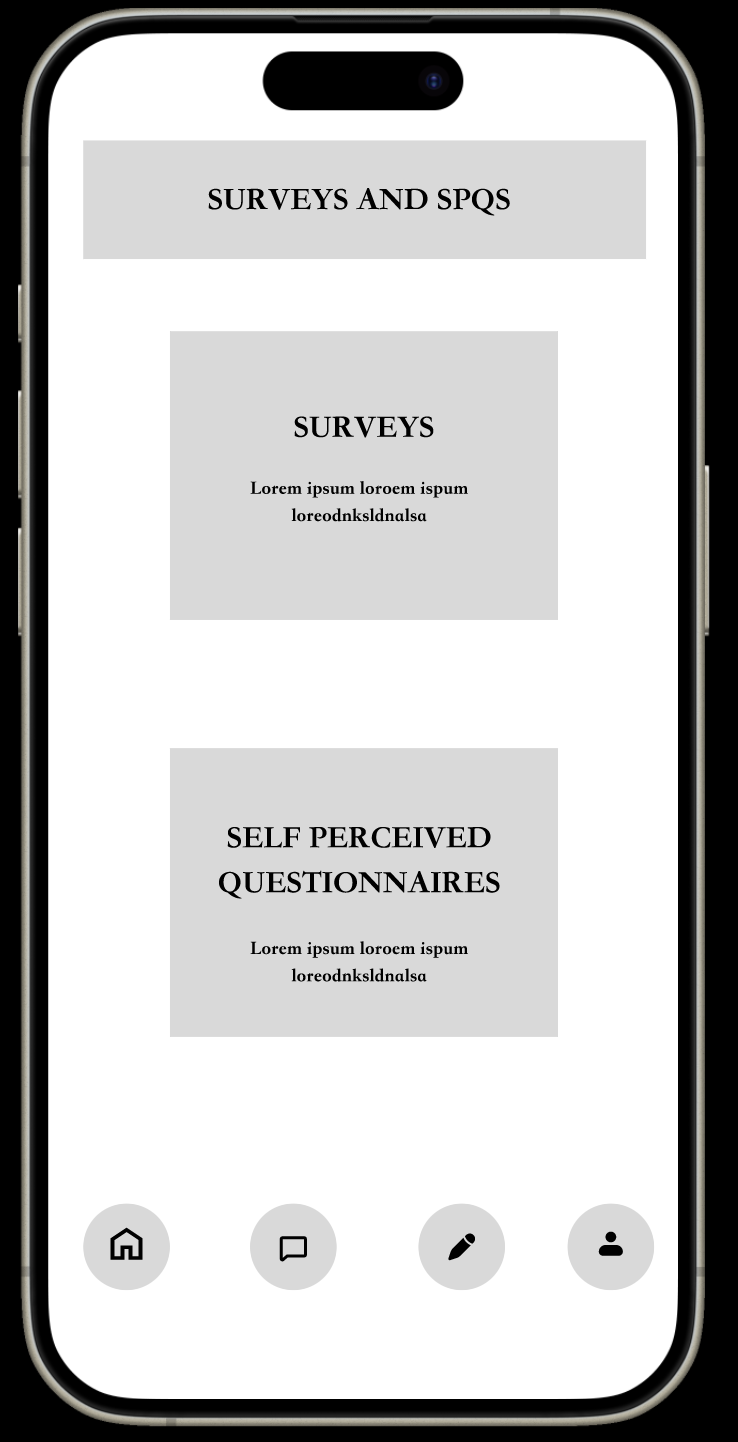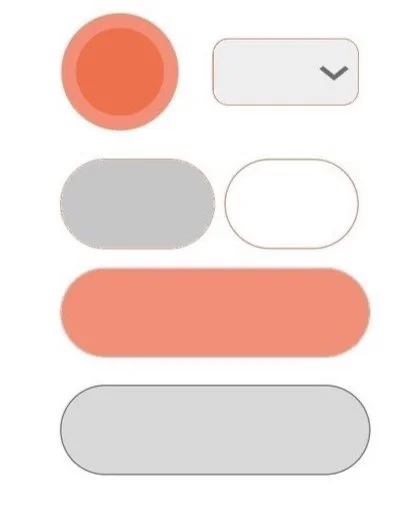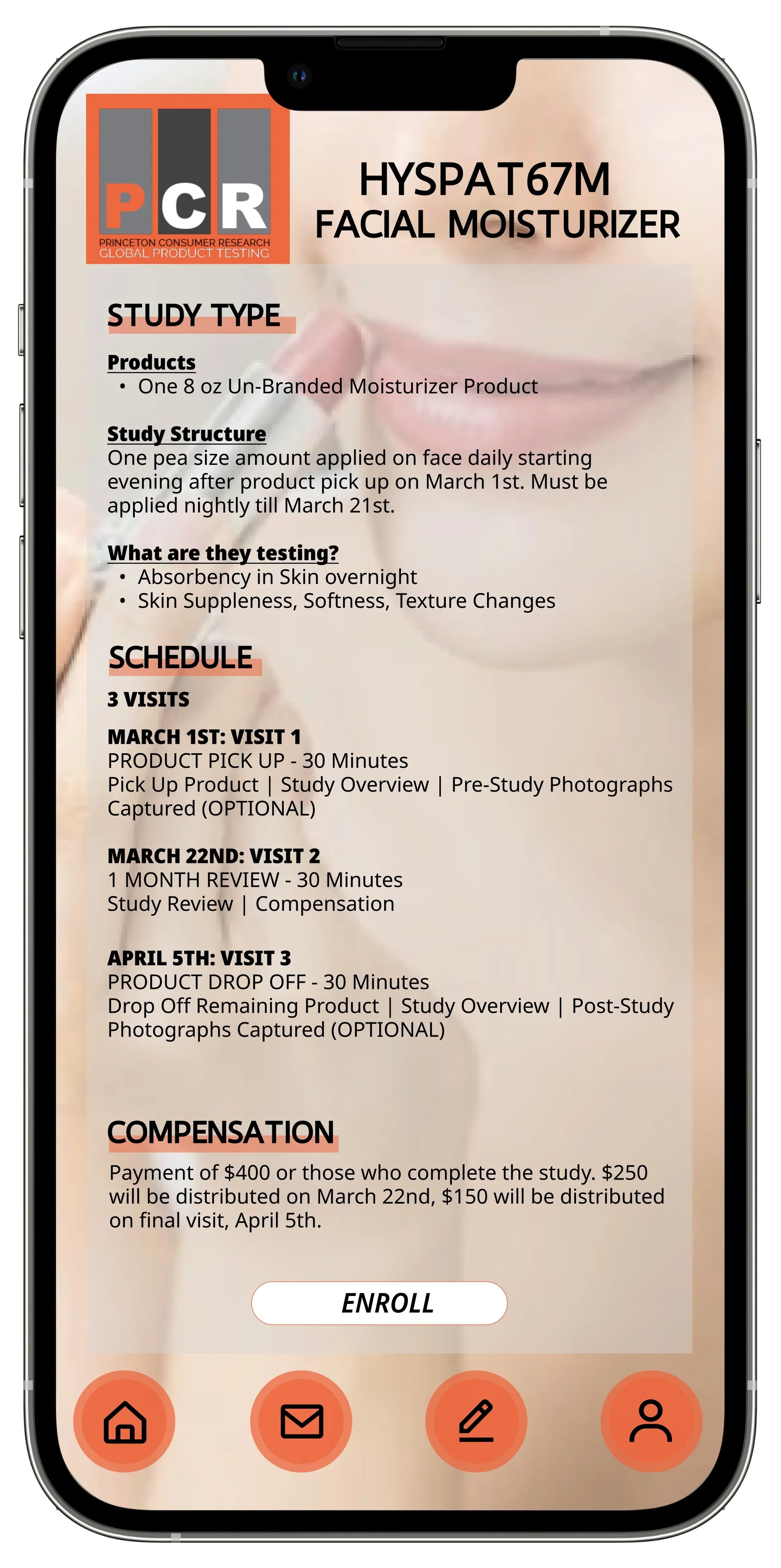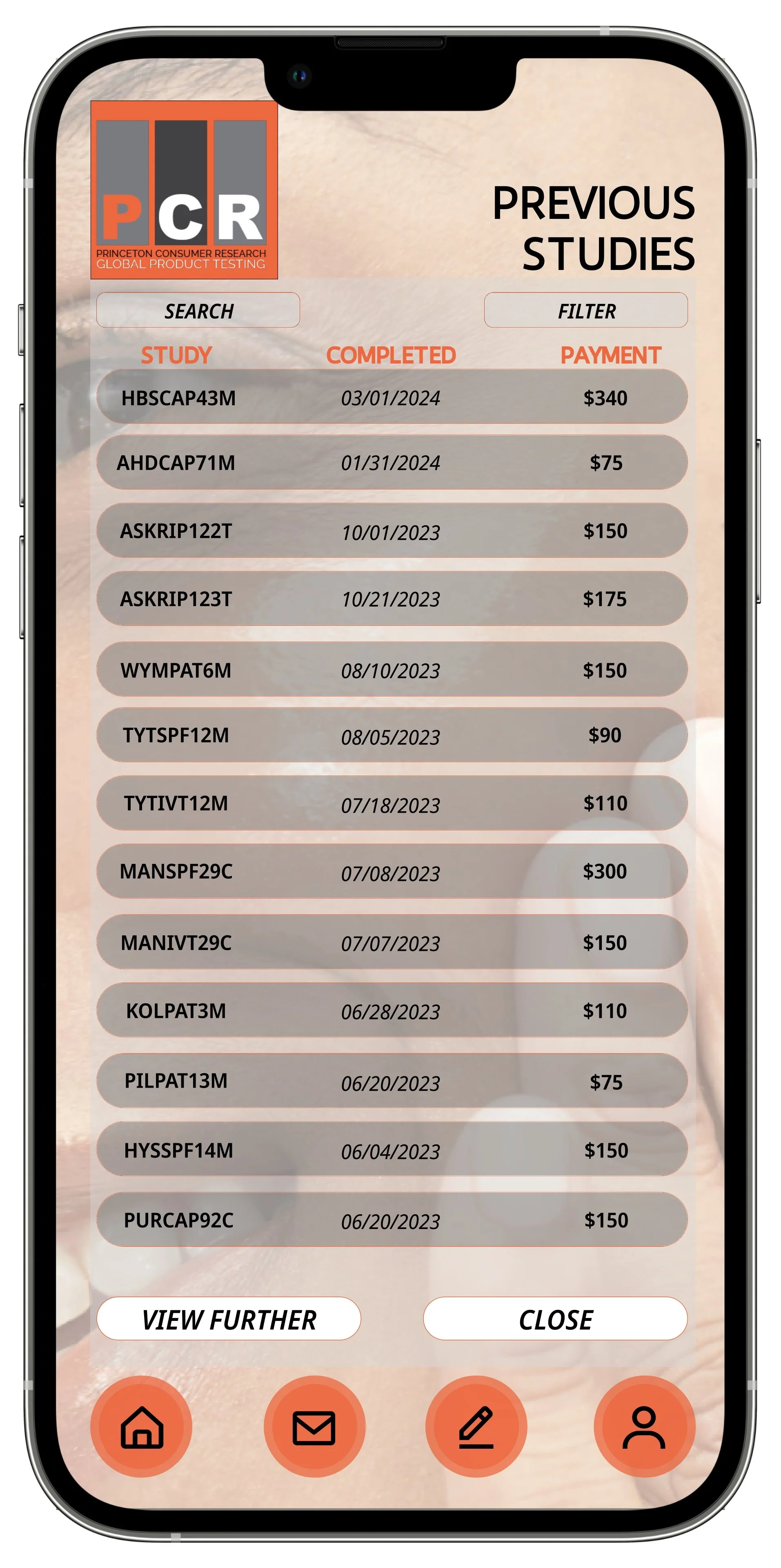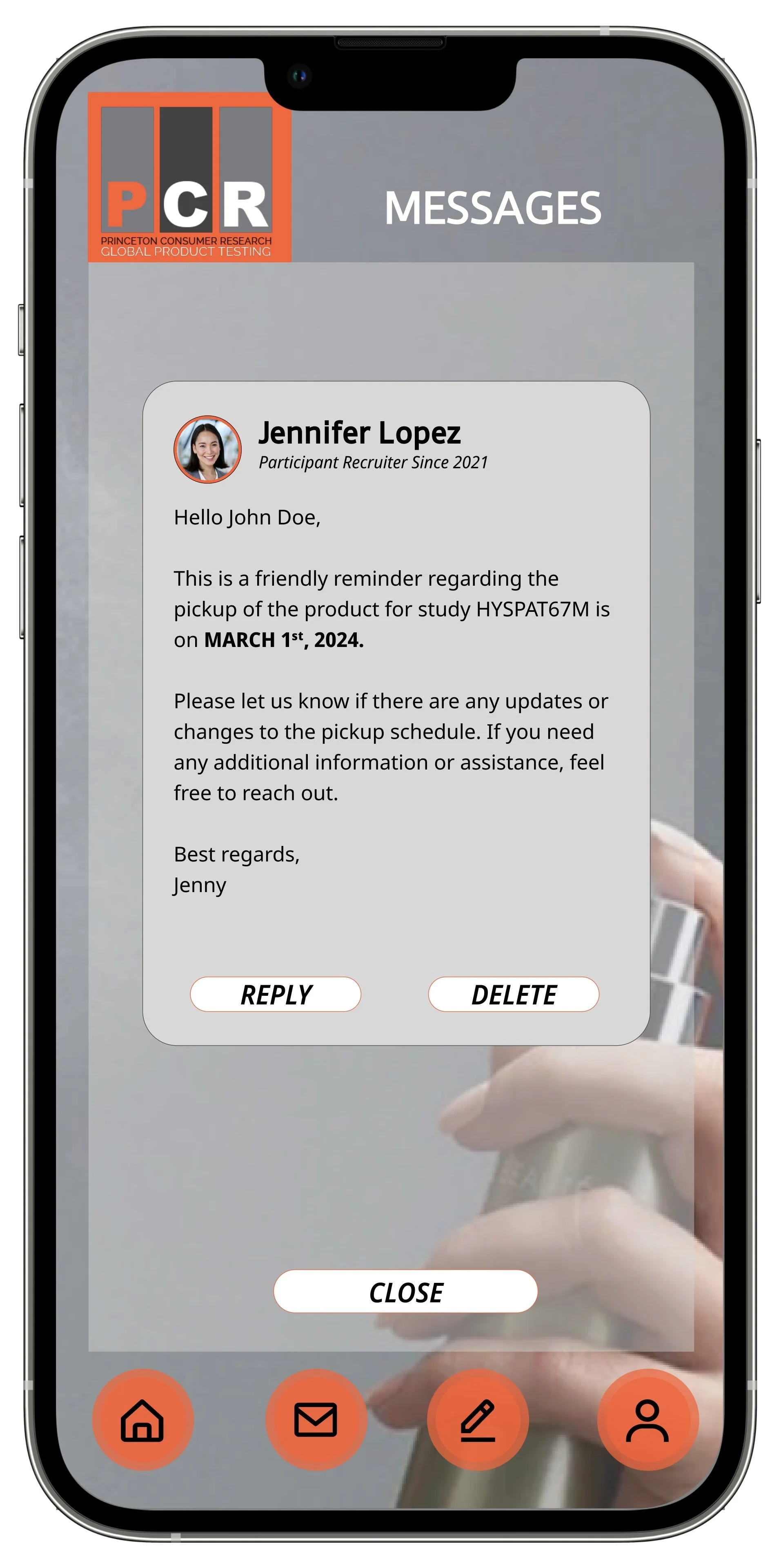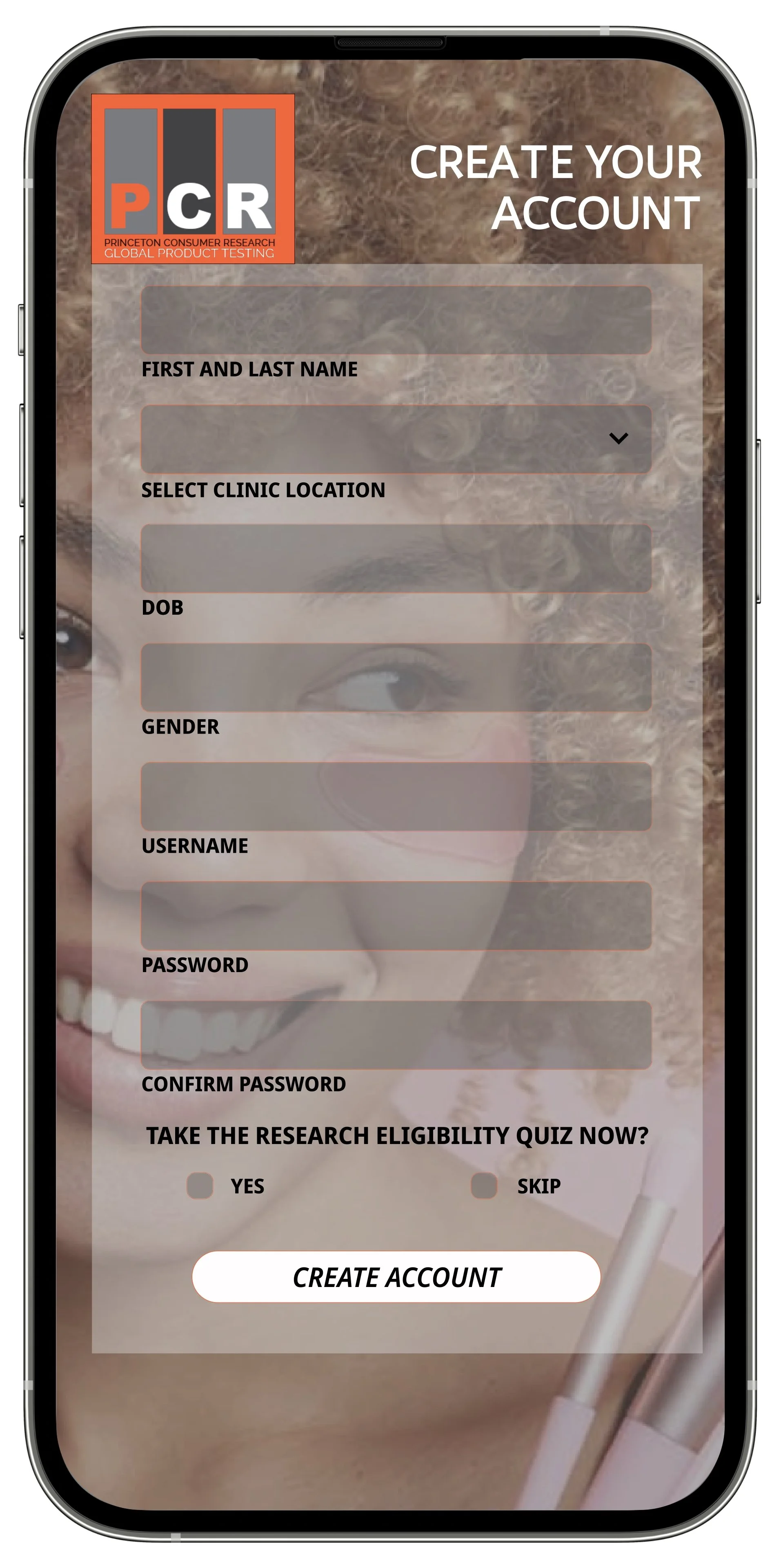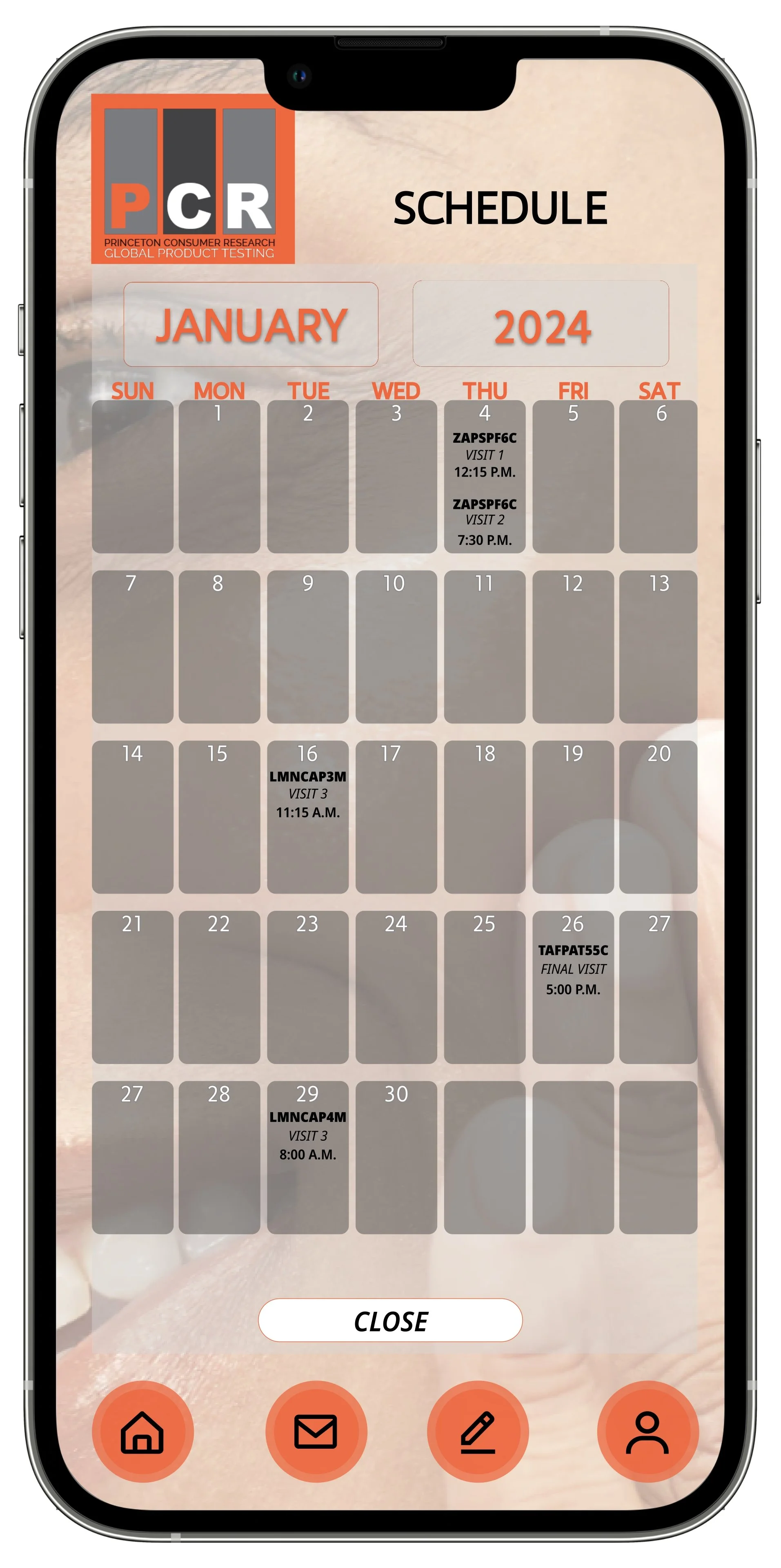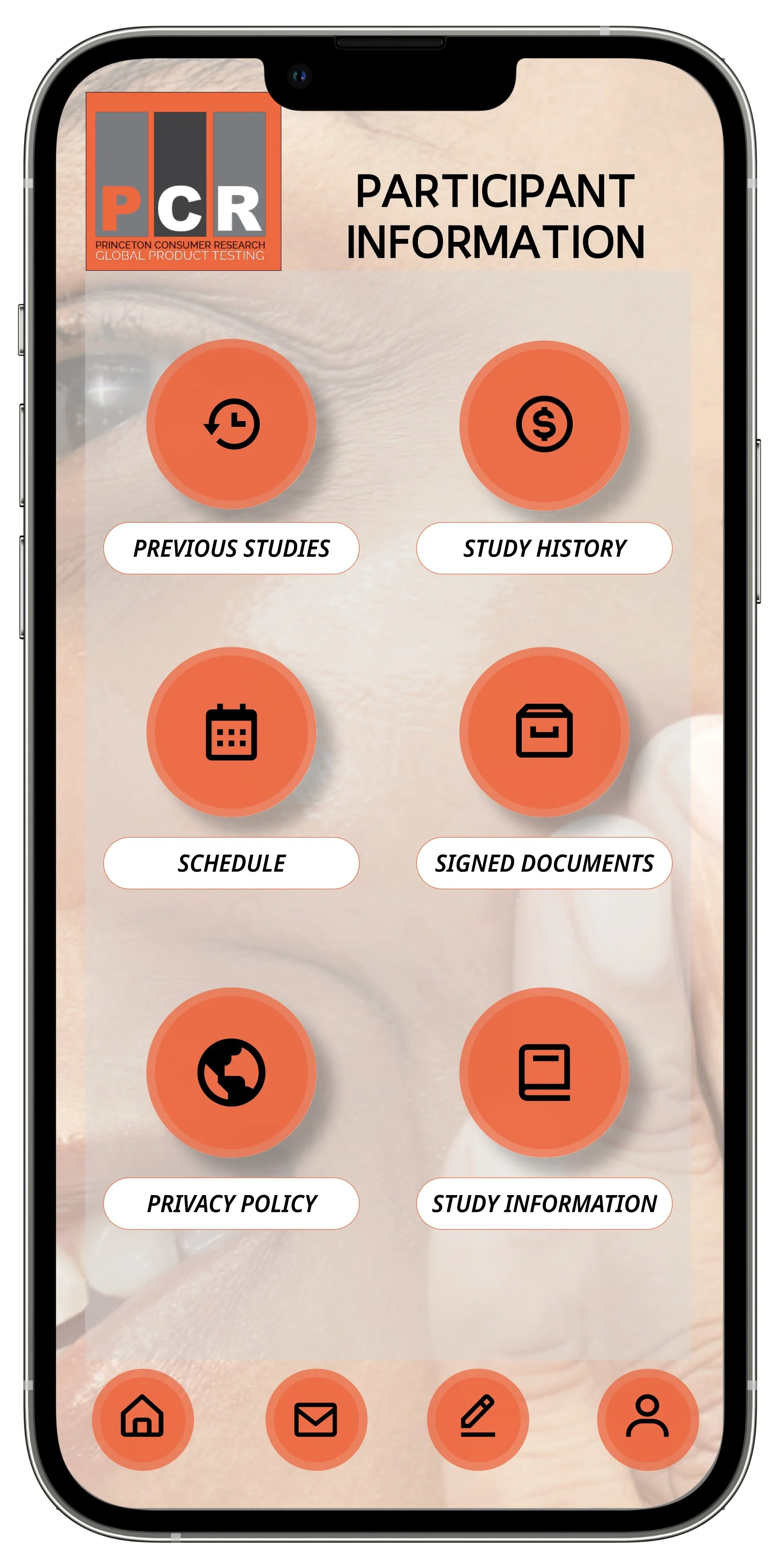PARTICIPANT RETENTION AND ACCESSIBILITY APP
An app for Princeton Consumer Research participants to sign up for studies, find their participant history, and contact a recruiter with ease.
Case Study
Individual Research & Design for Princeton Consumer Research
Year
2023-2024
Role
UX Researcher & Designer
PROJECT OVERVIEW
Aiming to revolutionize the way research participants engage with and manage their involvement in research studies. By seamlessly integrating features such as storage for informed consent forms, appointment reminders, payment history, and direct messaging with recruiters to help empower participants with greater control and convenience throughout their research journey.
PROBLEM
PCR’s web application is mixed use for both clients and participants to acquire information about each study; They can apply to participate or have their product tested if they are cosmetic product owner. The current web application has confusing scientific language as it is client focused. There are currently no resources for participants to view previous research history, payments, or adjust their participant preferences with PCR. Currently, PCR does not have an app so participants are only able to call in and once they’ve arrived, all forms are pen and paper.
GOAL
Produce an app for participants to view their personal documents and history. Participants should be able to chat live with a recruiter, adjust their study preferences, and navigate their participation history.
User Demographics
Define Challenges
User Goals
Hypothesize
EMPATHIZE
DEFINE
Design Process
IDEATE
User Interviews
Personas
Empathy Mapping
Wire Frames
Style Guide
Information Architecture
Implement Feedback
Usability Testing
UNDERSTAND
PROTOTYPE
Low-Fidelity
High-Fidelity
Visual Design
USer Research
The most important part: The User.
During this case study I chose to conduct user interviews and user surveys as well as a have those who interviewed in person participate in card-sorting.
I interviewed thirty individuals. Twenty individuals were previous and or current PCR participants which received a user survey and an in-person interview. 10 individuals were non-PCR participants who would be potential study participants, which received an in-person interview.
HIghLight 1
The mean PCR participant history with PCR was 3.2 years.
HIghLight 2
61% stated they learned about PCR via a friend. 0% stated they had seen a PCR advertisement.
HIghLight 3
More than 60% stated they have participated in less than 5 studies.
HIghLight 4
100% PCR Participants currently have no access to their PCR history.
Ouch.
Pain Points.
Research participants have no access to previous study history or payments.
1.
Participants must call Princeton Consumer’s recruiter to communicate any concerns or questions. There is no voicemail and many participants call at once when they receive a new study email or if changes have been made to a study, which makes it difficult to connect with someone.
2.
Princeton Consumer’s website is client-driven. Many webpages or information pages are a mix of both client and participant information, which may appear confusing, unappealing, and frustrating to navigate both as a new and returning participant.
3.
USER SURVEYS
10 Questions; 20 Individuals.
How important is it to you to have an online platform to access upcoming studies and documents?
Would you rather use a live chat feature to communicate with a recruiter instead of calling the clinic?
How often do you find yourself traveling to the clinic to find the study is full or canceled without warning/miscommunication?
Is it important for you to have access to your financial compensation details through an online platform?
How helpful would it be for you to have access to your study history online?
Are you happy with the current process of scheduling and attending appointments through call and email?
How likely are you to use a feature that allows you to track and manage your study participation online?
How often do you experience issues with the current system for managing your study-related information?
How important is it for you to receive reminders and updates about your study appointments through an app or online platform?
How challenging is it to currently access any personal information with Princeton Consumer Research?
How important is it to you to have an online platform to access upcoming studies and documents?
How often do you find yourself traveling to the clinic to find the study is full or canceled without warning/miscommunication?
How helpful would it be for you to have access to your study history online?
How likely are you to use a feature that allows you to track and manage your study participation online?
How important is it for you to receive reminders and updates about your study appointments through an app or online platform?
Would you rather use a live chat feature to communicate with a recruiter instead of calling the clinic?
Is it important for you to have access to your financial compensation details through an online platform?
Are you happy with the current process of scheduling and attending appointments through call and email?
How often do you experience issues with the current system for managing your study-related information?
How challenging is it to currently access any personal information with Princeton Consumer Research?
Qualitative Research
What is your age?
What is your highest level of education?
Why do you study here with Princeton Consumer Research?
What features would you find most valuable in an online platform for signing up for studies?
Can you describe any specific challenges you’ve faced due to communication difficulties with Princeton Consumer Research?
What would be your ideal way to receive upcoming studies, enrolled studies schedules, and or alerts on when studies fill ?
How would having a recruiter available to assist with concerns through a direct message feature impact your overall experience with the company?
What specific information about financial compensation would you like to access through an online platform?
How would access to your study history online improve your experience with the company? What aspects of study history are important to you?
What frustrations have you experienced with the current system for scheduling and managing appointments?
What additional features or services would you like to see in an online platform for managing your study participation?
Do you currently manage and track your participation in clinical studies, and what improvements would you suggest?
In your opinion, what are the most critical elements for a successful online platform for clinical research participants?
USER PERSONAS
EMAPTHY Mapping
Users expressed clear frustration with the website, often feeling stuck and annoyed when trying to navigate it on their own. Many shared that the experience felt unnecessarily complicated, especially when they were already stressed and looking for quick answers. The confusion of not knowing where to click next or how to access important information without help left them feeling helpless and irritated. This frustration was even more intense when time was of the essence (they are next in line in the clinic waiting room desperately trying to find a document). These insights highlighted the need for a more intuitive, user-friendly design that reduces friction and makes it easy for users to get what they need without second-guessing their every move.
It was clear during this stage that participants desired a straightforward, reassuring experience that minimized stress, especially in time-sensitive situations. By mapping what users say, think, do, and feel, we pinpointed opportunities to enhance trust through transparent information flow, intuitive design, and clear communication, ultimately shaping a user-centered solution that addresses both functional and emotional user needs.
Information Architecture
Low-FIDELITY WIREFRAMES
#000000
Buttons
#4F4E4E
Typography
UI KIT
#ED683F
#D9D9D9
Icons
#FFFFFF
HIGH FIDELITY FRAMES
FEEDBACK & USABILITY
Usability testing revealed significant improvements in the user experience, with participants noting that they could now easily find all of their documents within the app. Clear navigation pathways, intuitive labeling, and streamlined workflows reduced confusion and frustration. Users appreciated the profile feature that tracked their personal metrics which added a fun element to the app as well as the simplified layout, which allowed them to access important information quickly and independently. Feedback highlighted that the enhanced organization and visibility of documents not only saved time but also boosted user confidence in managing their tasks without assistance.












